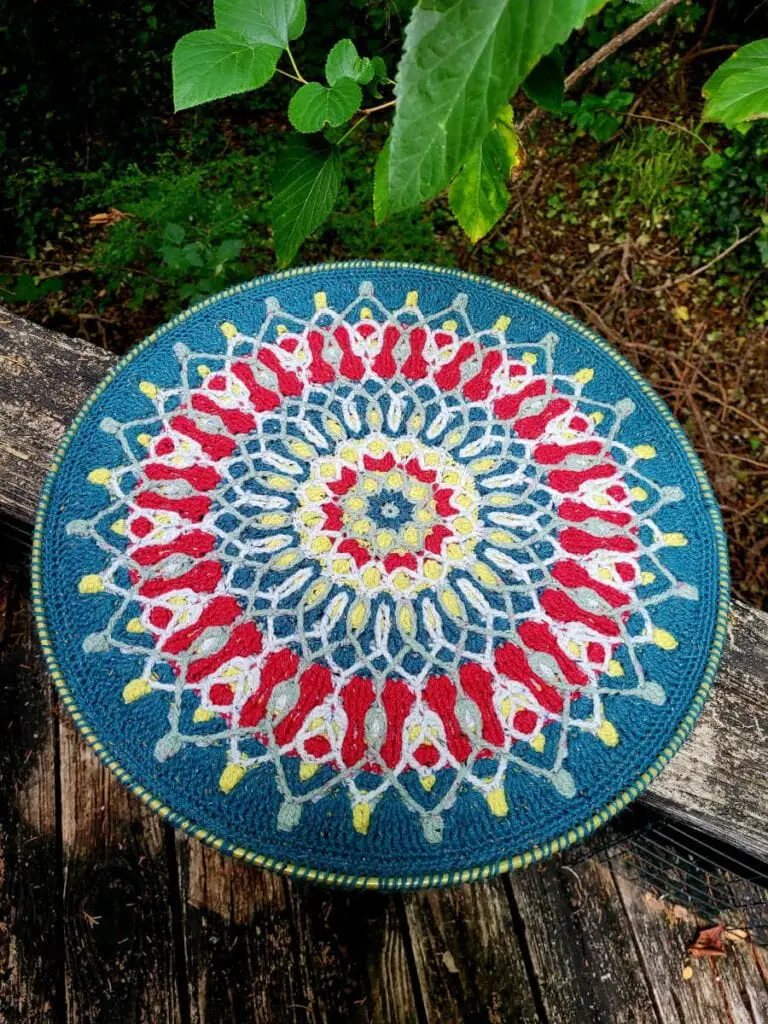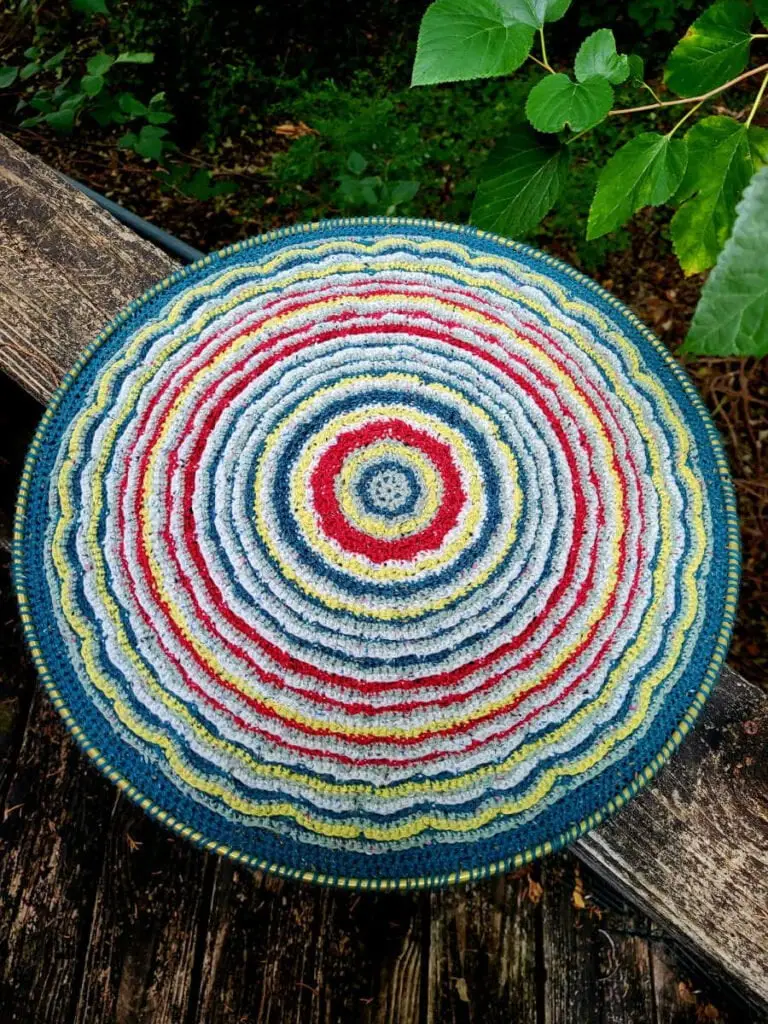
A while ago, and much to my delight, I received a friend’s selection of colors of Scheepjes Terrazzo yarn, and I was immediately impressed by its softness. Initially, the thread may feel stiff, but it becomes dreamy, soft, and cuddly warm once washed.
Terrazzo yarn comprises 70% recycled mulesing-free wool and 30% recycled viscose. It is a DK weight that comes in balls of 50 g (1.75 oz) and a length of 175 m (191 yds).
I used this yarn to crochet Tatsiana Kupryianchyk’s (aka Lilla Björn) Stella Mandala. As Tatsiana says on her blog, “Overlay crochet is like painting with yarn. Even though the colors are changed every round, it looks like the change happens after every few stitches. That is because the long, complex stitches are added on top of the background, usually worked with single crochet stitches only in the back loops. So basically, the base and the textured stitching are growing simultaneously. And I cannot find a better word than “magic” to describe this process.” I could not agree more!
The colors in the box were 701 Girasole, 719 Cremisi, 745 Pergamena, 756 Guscio d’uovo, and 760 Giungla.
According to Scheepjes, “Terrazzo is lightweight and warm, with added softness by blending wool with viscose.
Composed of multi-tonal base shades, enhanced by contrasting and complementing flecks of color – resulting in a felted, tweed effect yarn with gentle stitch definition and impressive texture.
Available in a huge range of 60 colorways, Terrazzo yarn makes a wonderful sustainable choice for colorwork techniques such as Fair Isle knitting and Brioche crochet.”

Tatsiana’s mandala patterns are addictive. While some designs may seem complicated to a crocheter attempting the overlay technique for the first time, Tatsiana’s patterns are easy to follow. Frequent exclamations of happiness will accompany you as you crochet one round after another. One design turns into a potentially infinite number of color combinations and visual outcomes to fit into any décor, mood, or occasion.
I love mandalas made in all types of techniques, as they can be turned into wall hangings, pillows, and central motifs of blankets, to mention a few possibilities. I am sure I will make the Stella Mandala again, and I already have several color combinations in mind and what purpose they will fulfill.
Do not hesitate to give overlay, brioche, and mosaic crochet a go. These techniques will expand your skillset and result in many hours of contented sighing (perhaps not right away, as you may need to work out essential things, such as gauge, tension, and rhythm). Grab your favorite yarn, your favorite hook, and a quiet, relaxing place and fill your soul with the serenity and gratification it craves.


A NOTE ON MULESING-FREE WOOL
For those unfamiliar with the term “mulesing-free wool,” here is a quick overview. According to People for the Ethical Treatment of Animals and Wool Facts, mulesing is the practice of cutting portions of flesh from sheep’s hindquarters with shears because urine and feces often collect in those skin folds. Sheep are bred to produce more wool than usual, and these skin folds attract flies, who then lay eggs and hatch larvae, a condition termed “flystrike.” The idea behind mulesing is that the cuts will heal as smoother, wrinkleless skin that will not collect moisture, preventing flystrike – yet the wounds may take weeks to heal, every so often become infected, and void the process altogether.
Many people avoid wool for ethical reasons, such as a questionable track record on animal welfare. Wool tends to be delicate and not durable; it is prone to mildew and shrinking and causes itching in those sensitive to it. For this reason, wool is commonly blended with another fabric or processed in various ways, often voiding any of the pure material’s biodegradability.
The shift from sheep’s wool encourages alternatives made of everything from standard cotton to innovative biotechnological materials. Beyond organic cotton, hemp, and bamboo, there are pioneering fibers such as Weganool (70% organic cotton and 30% calotropis), Woocoa (coconut and hemp fiber), Nullarbor (tree-free rayon), Tencel (wood cellulose), recycled polyester aka rPET (fiber from recycled plastic bottles), and SeaCell (cellulose and seaweed).
